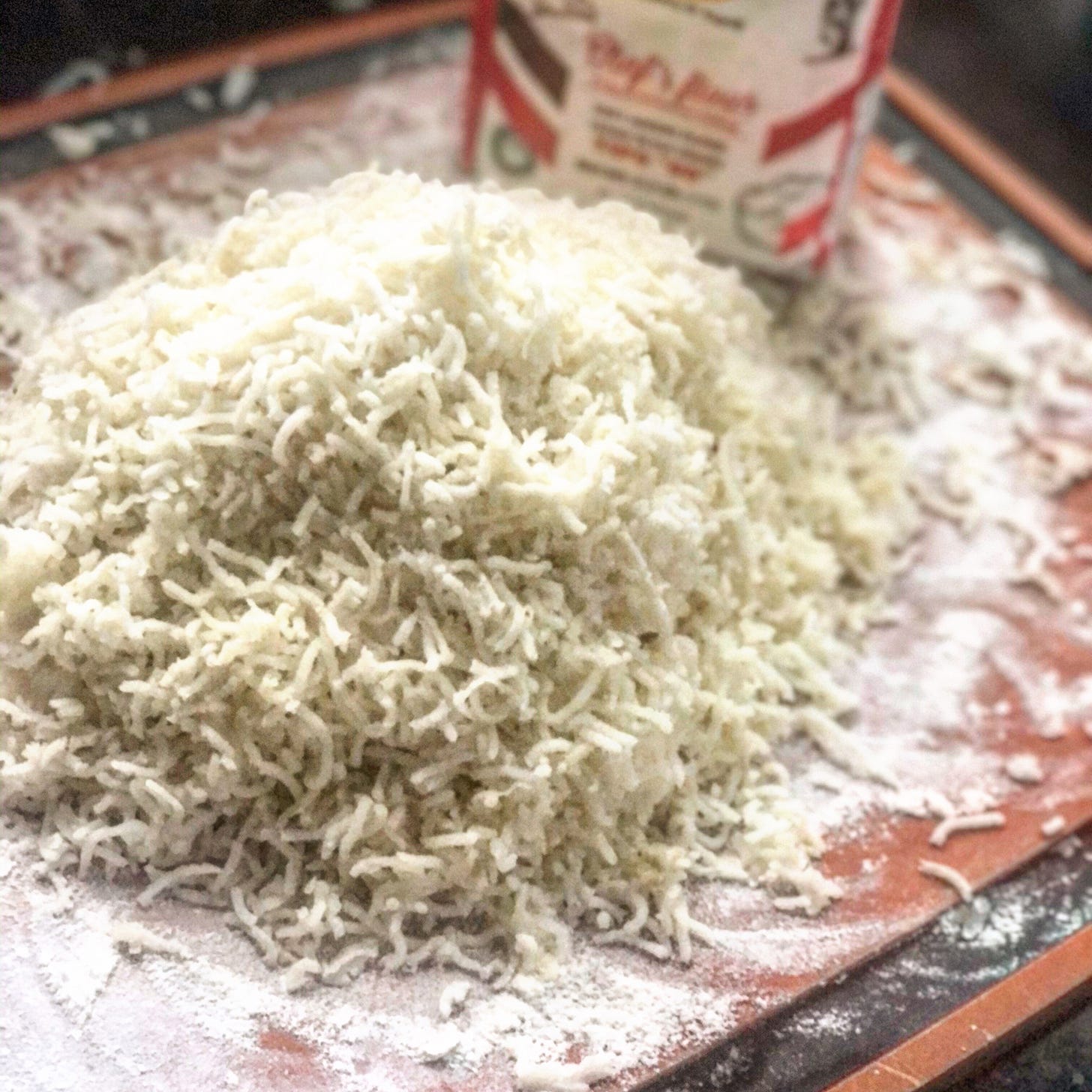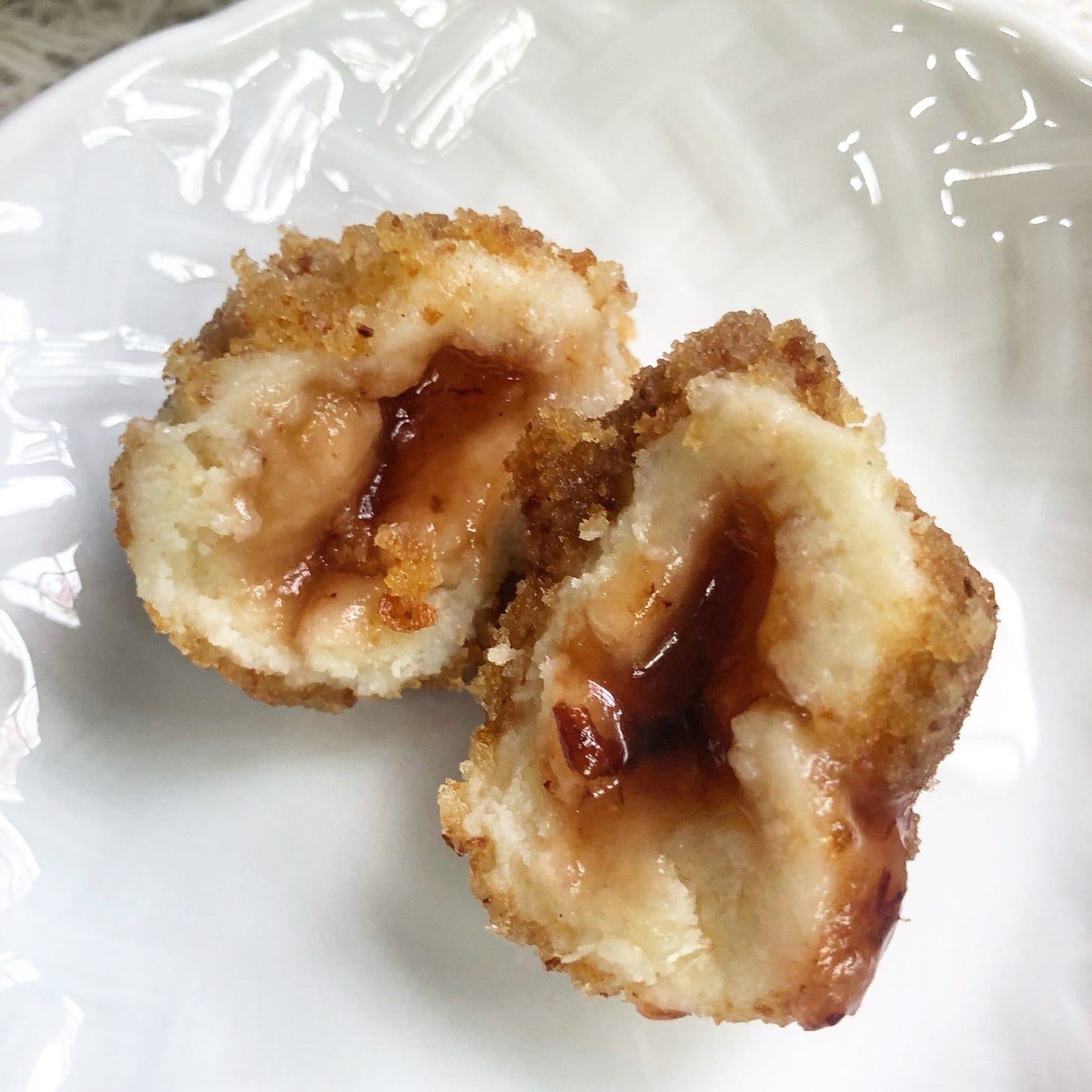The favourite.
We all have one. An aroma can bring it back in full force. Or it could be an old photo, edges curling, trapped haphazardly in a sheaf of paper. Improbably a song can bring it to mind, or a casually purchased ingredient, as humble as a gnarly russet potato.
Sometimes it’s a shared passion, although the details differ. We may argue about the composition, the texture, the size, the exact proportions and shape and taste. But whether buttery, sweet, rich or pillowy, we can all agree on one thing. It was the favourite.
Traditions lost and found
There is something about traditions lost and found in the kitchen that have special meaning for me. Perhaps it’s because my mother had so few of her own, growing up as she did a near orphan. From her birthplace in Pola (then Istria, now Croatia), to Conegliano, the place where she met my father, fell in love and eventually left for Windsor, Ontario, she picked up much along the way. Rooted mostly in Italy, with a heritage that may have been Romanian, and displaced into prosaic Canada, she surely relied on an insatiable thirst for trying the new and unknown, surrounded as she was by both the new and unknown for most of the first half of her life.
That thirst revealed itself in the kitchen daily. Stellar cabbage rolls gave a nod to her Istrian heritage, while musetto, fegato (liver), polenta and risi e bisi placed her firmly in Veneto. She was both fascinated and puzzled by the convenience cooking of her adopted country. She loved Tang and Bugles (although not together), but couldn’t understand peanut butter and jelly swirled in the same jar, much as it was my heart’s desire. Her homemade pasta was the stuff of legend, her pizza rivalled any of Windsor’s finest, but she found inspiration for the sweets she loved in the local newspaper, where she clipped recipes for very non-Italian desserts like chocolate log and hedgehogs.
And still. None were the favourite.
The favourite
I don’t know where in the journey she learned to make gnocchi. With its northern Italian provenance and kissing cousin status to the dumplings of Eastern Europe cuisine, I suspect this was an early addition to her recipe archive. Wherever it was, it gave birth to the favourite.
When I asked my sisters this week what dish of our mother’s they would request first, if given the chance, they both said the same thing. Gnocchi filled with homemade plum jam, topped with a brown butter and bread crumb.
We didn’t know it then but it turns out this is a thing. Properly called gnocchi di susine, and originating in Trieste, these plum-filled gnocchi were always served alongside gnocchi con sugo at our house. As I explore recipes for these wonders, I see now that my mother toned down the sweetness, skipping the addition of cinnamon and sugar with the breadcrumb sauce.
A perfectly simple dish, made with love and eaten with joy. It seems exactly right for Mother’s Day.
Gnocchi di Susine
serves 4
This is a recipe for gnocchi di susine from which you can also make plain gnocchi to dress as you wish. The proportions here yield enough to make several dozen regularly sized gnocchi, and about three dozen or more of the jam filled variety. Whichever you do, they can be made ahead, frozen and cooked just before eating. It’s always good to a have a favourite in the freezer, ready to go.
Ingredients
2 ½ pounds (a little more than 1 kg) russet potatoes
1 large egg
1 cup all purpose flour (135-150 grams), more as needed
Salt to taste
Plum jam, about ½ cup
1 cup (110 gr) dried breadcrumbs
½ cup unsalted butter
1 teaspoon salt, more to taste
1 teaspoon sugar, more to taste, optional
Cinnamon, optional
Put unpeeled potatoes in a large stockpot of salted water, to cover by about 1 inch, cover and bring to a boil. Cook for 30 minutes or until a paring knife slides easily in and out of the potatoes.
Transfer the potatoes to a cutting board and remove the skin. Gloves and a small paring knife help with this hot task. Cut the potatoes into quarters.
Pass the potatoes through a potato ricer or food mill with the fine die onto a lightly floured surface. Mound the potatoes and let them cool for a few minutes.
Make a well in the centre of the potatoes, and break the egg into it. Begin to incorporate the egg with the potatoes by kneading the ingredients together. Slowly add the flour and continue to incorporate until the flour is blended into the potatoes. Add about a tablespoon of salt and continue gently kneading the dough until it has an even consistency, about one minute more. Taste the potatoes, adding more salt if needed, and blend again.
Make the gnocchi di susine. Have a parchment-lined baking tray ready. Divide the dough into four pieces. Roll one piece into a thick rope about 1 inch in diameter. Using a knife, cut the rope into equal pieces about 1 inch wide. Take a piece of dough in your hand and flatten it into a small disk. Put 1 teaspoon of jam in the centre, close the dough around the jam and roll gently in your hands to form a ball, about the size of a large walnut. Don’t worry about consistency of size; they will vary based on the amount of jam and your rolling technique!
As you roll the gnocchi, place them on the prepared tray. Continue until you have the desired amount.
To make plain gnocchi, roll out a piece of dough into a smaller rope - about ½ inch in diameter. Using a knife, cut the rope into equal pieces about 1 inch wide. Place the gnocchi on the tray.
The gnocchi can be held in the fridge on the tray for up to 6 hours. Or they can be placed in the freezer on the tray, frozen, and then put into freezer bags for future use.
Make the breadcrumb sauce. In a large skillet melt the butter. Add the breadcrumbs and salt (sugar and a pinch of cinnamon if desired). Cook until the breadcrumbs are coated and lightly toasted. Add more butter as needed until the breadcrumbs resemble wet sand. Taste and adjust for seasoning. Total cooking time will be around 8-10 minutes. Remove from heat.
Cook the gnocchi. Bring a large pot of salted water to boil. Add the gnocchi and boil until the gnocchi fully float to the top. Take them out as they cook with a slotted spoon and transfer to a bowl. If cooking from fresh, this will take about 4 to 5 minutes; if cooking from frozen this will take about 6 to 7 minutes. Reserve about ½ cup cooking water
To finish. Over low heat, add the cooked gnocchi to the breadcrumb sauce with a ¼ cup reserved water. Gently stir to coat, adding water as needed. Do not overcook; the goal is to coat the gnocchi only. This should take a minute or less.
To serve. Divide the gnocchi between bowls, passing more breadcrumb sauce on the side.









Wow! I have never heard of gnocchi filled with jam! These look wonderful! I am saving this recipe to try it sometime. Your mother sounds delightful. Thank you for sharing your memories and the recipe.
❤️